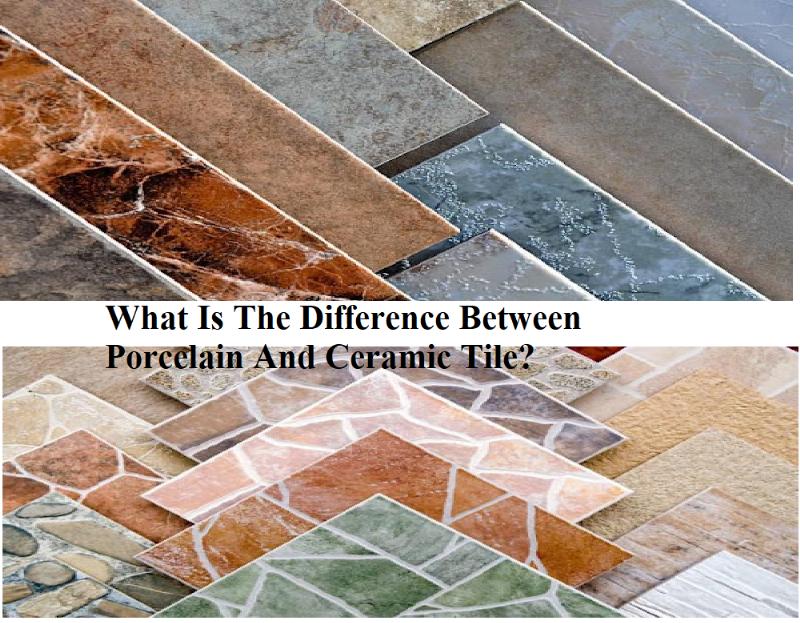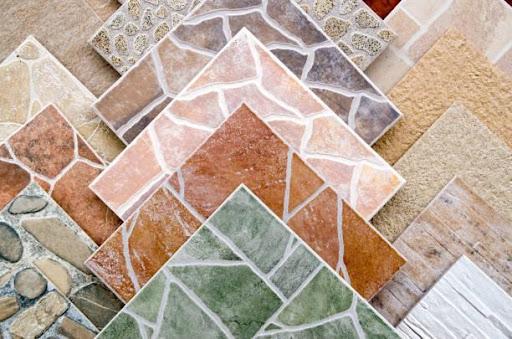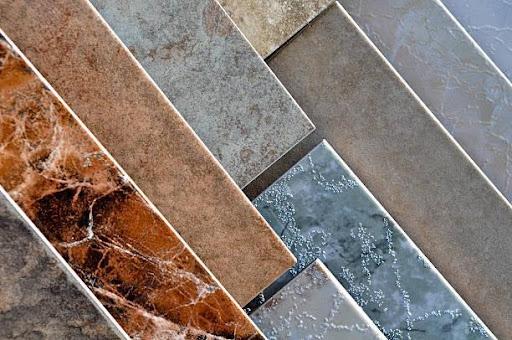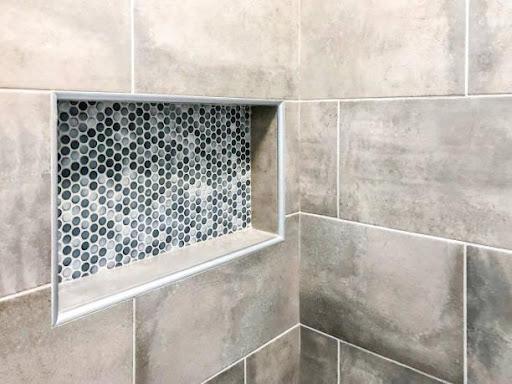What Is The Difference Between Porcelain And Ceramic Tile?
Porcelain and ceramic are often used interchangeably by consumers as though they are the same thing. This is unsurprising, given the fact that ceramic and porcelain tiles are used for similar purposes. They are also installed similarly and have roughly the same benefits and downsides as flooring or wall surface material.
Is there a distinction between porcelain and ceramic tiles? Let’s examine the differences between the terms porcelain and ceramic as they are often used together. We will also look at the differences between the two types of tiles to help you choose which is best for your home.
What is a porcelain tile?
Porcelain tile is a ceramic subtype. It’s made out of refined white clay, sand, and feldspar. The tiles are fired at a higher temperature, reducing the amount of water in them.
As a result, it’s more expensive and harder, denser, and less porous. The tiles are either kept in their natural state or altered to look like stone, wood, concrete, or other materials after being kiln-fired.
What is a ceramic tile?
Ceramic tile is manufactured from red, white, or brown clay and is kiln-fired at a lower temperature in the kiln. All of these ingredients should be mixed in a suitable ratio. The tiles are softer, more porous, less dense, and less expensive. They’re light and easy to work with.
Porcelain and Ceramic Tile: Pros and Cons
Appearance
Both ceramic tile and porcelain are frequently created with a glazed surface layer. This makes them nearly indistinguishable at first appearance.
Porcelain Tile
One recent breakthrough in porcelain tile manufacturing is the ability to make them look like diverse materials. You’ll find that most ceramic tiles have a consistent color and design.
Porcelain tiles can be made to seem like genuine stone, such as marble or even wood grains. Porcelain tile is a fantastic choice for those who desire the beauty of wood without the risk of water damage. The color or design of porcelain is carried throughout its entire body. So if they get chipped, it’s not as noticeable.
Ceramic Tile
Ceramic tiles have designs and colors printed on them, which are then sealed with a glaze. Because the tile’s body is a different color than the surface, if it is chipped, it will be more obvious. They have a pleasing, clean-lined appearance, and the long-lasting glazed finish comes in a variety of colors and designs. (Bob Vila, 2021)
ProTip Takeaway. Porcelain tile is the best in terms of appearance. It has a visual advantage because it comes in a wider range of colors, patterns, and surface textures. With porcelain tiles, you will find options that resemble wood grains and natural stone.
Water and Heat Resistance
Porcelain Tile
Porcelain tiles are denser and less porous than ceramic tiles because of the way they are made. Because they are highly liquid-resistant, they are ideal for use for outdoor use, bathrooms, basements, and other moist areas.
There are few options better than porcelain tiles when it comes to moisture-resistant flooring. Porcelain tiles are becoming more popular in recent tile trends. They are typically used in moist areas where they may truly shine as the greatest alternative available due to their low absorption rate.
Porcelain tile has a great heat-resistant quality. This makes it a terrific choice for countertop surfaces.
Ceramic Tile
If you need flooring tile for a damp area like a bathroom or basement, you’ll want something that will withstand moisture. In these cases, ceramic tile is an ideal choice.
Excess water is easily wiped away before it seeps down to the underlayment beneath your tile. Ceramic tile is a good alternative for most wet applications as long as it’s laid properly with good quality grout in between. In some cases, it’s even used in rooms with hot tubs or swimming pools. Ceramic tile has also been used in showers before.
Ceramic tile is a terrific choice for countertops because of its high heat resistance.
Maintenance & Durability
Porcelain Tile
Ceramic clays are less permeable than porcelain clays because they are denser. Porcelain tile is, therefore, more durable and water-resistant than ceramic tile. It is more robust and more suited for heavy traffic and use than ceramic tile because of its through-body composition.
When you chip a porcelain tile, the color stays the same all the way through, making the damage almost undetectable. Porcelain is a low-maintenance material that just requires periodic grout line sealing.
Porcelain tiles are durable and resistant to scratches and scuffs, making them ideal for high foot traffic areas.
Ceramic Tile
If you chip a ceramic tile you will find a different color underneath the top glaze. This means that chips are likely to be quite visible. The type of clays used to make ceramic tile are less dense than porcelain clays. With this, ceramic floors are somewhat more prone to cracking and breaking.
Unglazed ceramic tiles will also need to have sealers applied to the entire tile. Do not apply sealers to the grout lines only. (The Spruce, 2021)
ProTip Takeaway. Porcelain tiles take the win. Simply wash them off on a regular basis and clean the grout in between, and they’ll last for years. Because these tiles have a consistent color throughout, they will continue to look their best even if broken or damaged.
Installation
Similar methods are used to install both types of tile flooring. A mortar-based thin-set adhesive is used to fix tiles to a cement board underlayment. Once the tiles are in place, mortar-based grout is used to fill the gaps between them.
It is then sealed against moisture once it dries. Because of the variances in densities, there are minor differences in how ceramic and porcelain tiles are handled.
Porcelain Tile
Porcelain tile is more brittle, and cutting it properly may need the expertise of a professional tile installer. For cutting porcelain tile, a wet tile saw is required to get the job done. A cheap snap cutter will work to cut and install ceramic tile.
Ceramic Tile
Ceramic tile is less dense than porcelain tile and hence less durable. It is also an easier material to cut manually, with a wet tile saw, or with a snap tile cutter for a DIY project. (Better Homes & Gardens, 2020)
Cost
Porcelain Tile
Porcelain tile is more expensive to produce than ceramic tile meaning the retail costs are greater. Porcelain tiles range in price from around $4-$8 per square foot. The labor cost will be between $60 and $120 per hour. The installation cost is high because the tile is hard which makes it difficult to cut with anything other than a diamond saw and fit.
Ceramic Tile
Ceramic tile is less expensive than porcelain tile when all other parameters are equal. On average, ceramic tile costs roughly 60 to 70 percent less than porcelain tile. Ceramic tiles can cost between $3-$4 per square foot.
Layering ceramic tile will cost between $60 and $100 per hour. Because tile is softer and can be cut with a regular saw, it is easier to cut and install. (Home Advisor, 2021)
Lifespan
Ceramic and porcelain tiles are both long-lasting building materials when properly cared for.
Porcelain Tile
Porcelain tile is a tougher material that wears better than ceramic tile. Its hardness makes it more prone to fracture when a building shifts structurally. With good maintenance, good-quality Porcelain tile can last for over 20 years.
Ceramic Tile
A ceramic tile floor, according to some estimates, can last about 10-20 years. This is if the grout is properly maintained and sealed on a regular basis. It is softer and does not last as long as porcelain tile.
It does have a stronger resistance to cracking due to structural displacement than porcelain tile. (Express Flooring, 2021)
|
Porcelain Tiles |
Ceramic Tiles |
|
|
Composition |
Fine kaolin clay |
Coarse clay |
|
Appearance |
Colors or designs are carried through its entire body |
Colors and designs are printed on the surface and protected with a type of glaze |
|
Water and Heat Resistance |
Resists moisture damage better Can withstand higher temperatures |
Water-resistant Good heat-resistance |
|
Maintenance & Durability |
Harder to repair |
Easier to repair |
|
Installation |
Professional installation is necessary |
Can be a DIY installation |
|
Cost |
Expensive $4-$8 per square foot |
More affordable $3-$4 per square foot |
|
Lifespan |
Can last for over 20 years |
Can last for over 10- 20 years |
Conclusion
It’s a tie for the greatest the two for the best floor tiles. Both porcelain and ceramic tiles have pros and cons, but there’s no disputing that either one can be a terrific addition to your room remodeling. Before making a decision, it’s always a good idea to assess your options.
Ceramic is the most affordable option, but it requires more frequent maintenance. Porcelain is more expensive, but it takes less maintenance and is less susceptible to spills and stains. It is up to the homeowner to decide which option they prefer.
Read Also Can you put carpet over tile
Read Also: Calibrated VS Rectified Tile
Flooring Consultation and Installation In Houston, Texas
Smart Remodeling LLC is one of the leading home improvement companies in Houston, Texas. We want you to be happy from the moment you walk into our showroom to the moment you walk out with your new flooring. As your home design partner, we’ll be there with you every step of the way.
Our design consultants have the expertise to assist you through the range of products we have to offer. Our expert installation team has been trained to ensure that everything is installed as you want it.
Contact us today, and let’s take your tile flooring project to another level.









